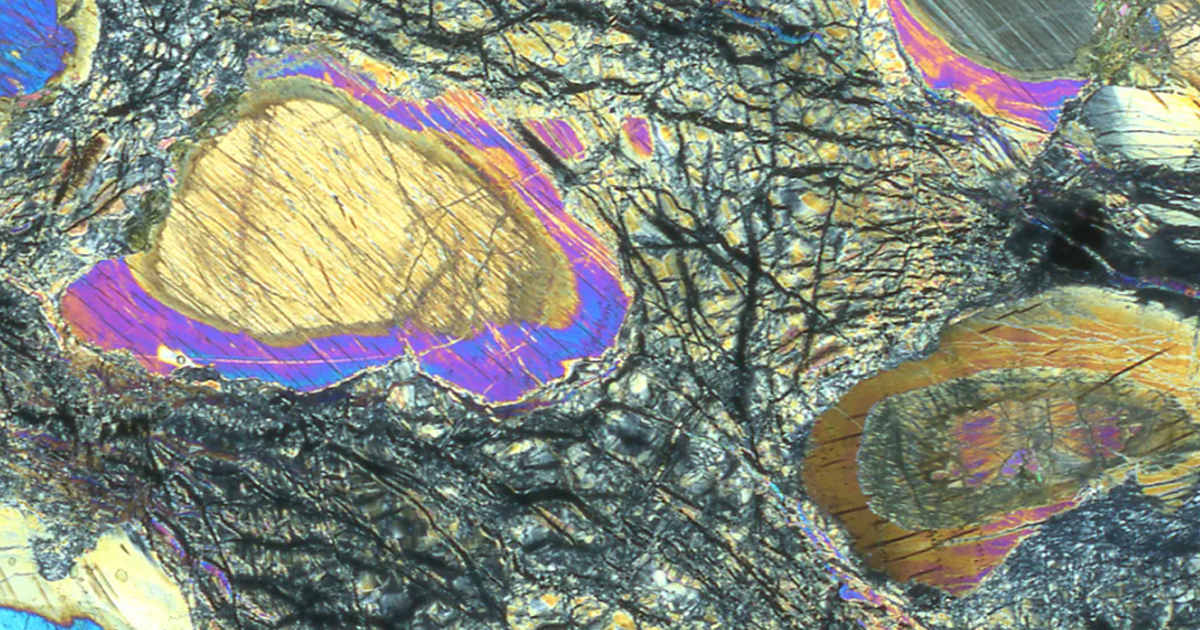
Scientists have dug themselves into a deep hole – literally.
Drilling a record-breaking 1,268 meters down, an international expedition team was able to recover a nearly continuous section of mantle rock from a “tectonic window,” a section of the seabed where rocks from the mantle were exposed along the Mid-Atlantic Ridge.
It is incredibly difficult to reach the mantle layer, located between the Earth’s crust and core, but by targeting the Mid-Atlantic Ridge, the expedition was able to access a drilling window thanks to the fault line.
Using the ocean drilling vessel JOIDES Resolution, the team secured a sample that will provide scientists with a never-before-seen sample that stretches more than 4,100 feet.
And what they are able to learn from that sample is truly extraordinary.
“Our study begins to look at the composition of the mantle by documenting the mineralogy of the recovered rocks, as well as their chemical makeup,” Professor Johan Lissenberg, study author from Cardiff University’s School of Earth and Environmental Sciences, said in a statement.
“Our results differ from what we expected. There is a lot less of the mineral pyroxene in the rocks, and the rocks have got very high concentrations of magnesium, both of which results from much higher amounts of melting than what we would have predicted. We also found channels through which melt was transported through the mantle, and so we are able to track the fate of magma after it is formed and travels upwards to the Earth’s surface.”
The findings provide valuable information on volcanoes, as mantle melt fuels volcanic activity on the surface.
There is also information to glean from the sample on the origins of life on Earth, since the core sample offers insight into the interactions between olivine, a plentiful mineral in mantle rocks, and seawater.
These interactions trigger a cascade of chemical reactions that generate hydrogen and other molecules that are vital for sustaining life.
“We also found channels through which melt was transported through the mantle, and so we are able to track the fate of magma after it is formed and travels upwards to the Earth’s surface. This is important because it tells us how the mantle melts and feeds volcanoes, particularly those on the ocean floor that account for the majority of volcanism on Earth. Having access to these mantle rocks will allow us to make the connection between the volcanoes and the ultimate source of their magmas.”
“The rocks that were present on early Earth bear a closer resemblance to those we retrieved during this expedition than the more common rocks that make up our continents today,” explained Dr Susan Q Lang, an associate scientist in Geology and Geophysics at the Woods Hole Oceanographic Institution, who served as a co-chief scientist on the expedition.
“Analysing them gives us a critical view into the chemical and physical environments that would have been present early in Earth’s history, and that could have provided a consistent source of fuel and favorable conditions over geologically long timeframes to have hosted the earliest forms of life.”
Though this is not the deepest-ever hole drilled into the Earth’s surface – that honor goes to Soviet scientists, who managed to eclipse a stunning 40,000 feet in the 1980s using the Kola Superdeep Borehole, called SG-3, in northwestern Russia.
But this hole was not able to reach the mantle layer due to the extraordinary thickness of the Earth’s crust in that region.
And that’s what is so important about this feat: not only did it provide valuable information that had not been previously available, but also a blueprint for how to conduct an international study overall.
“Everyone involved in Expedition 399, starting with the first proposal in 2018, can be proud of the achievements documented in this paper,” Dr Andrew McCaig, an Associate Professor in the School of Earth and Environment at the University of Leeds said. Our new deep hole will be a type section for decades to come in disciplines as diverse as melting processes in the mantle, chemical exchange between rocks and the ocean, organic geochemistry and microbiology. All data from the expedition will be fully available, an exemplar of how international science should be conducted.”
They say teamwork makes the dreamwork, and in this case, it also made a very big hole.
If you thought that was interesting, you might like to read a story that reveals Earth’s priciest precious metal isn’t gold or platinum and costs over $10,000 an ounce!